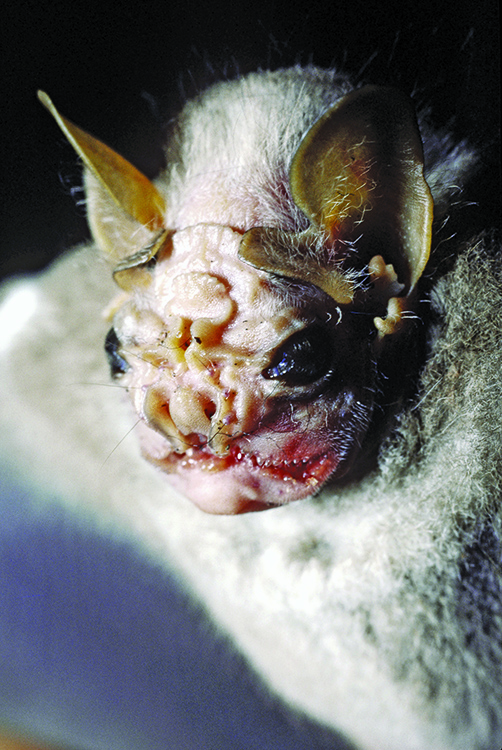Monster Monday: The Wrinkle-Faced Bat
Monster Monday
January 4, 2016
In nature’s beauty contest, bats are seldom winners. But even the homeliest vampire bat is easy on the eye compared to this Monday’s monster: the wrinkle-faced bat. As the name implies, the bat’s largely hairless face has a deeply wrinkled texture. We’re not talking about a few frown lines or crow’s feet, either. The wrinkles and folds of skin are so deep it can be difficult to distinguish the animal’s tiny nose. Compared to other bats, the wrinkle-faced bat also has a wide, shallow face with large eyes.

The wrinkle-faced bat measures up to 2 ¾ inches (7 centimeters) in length. It lives mostly in the forests of southern Mexico and Central and South America. Credit: © Roy Fontaine, Photo Researchers
Wrinkle-faced bats are fairly tiny monsters, measuring up to 2 ¾ inches (7 centimeters) in length. Their bodies are covered in brown to gray fur, and they even have a “beard” of white fur to complete their wizened look. The bat’s scientific name, Centurio senex, is a play on words that compares the animal’s appearance to that of a 100-year-old man.
Wrinkle-faced bats live mostly in the forests of southern Mexico and Central and South America. During the day, they roost in trees alone or in small groups. At night, they hunt for food. If you ever encounter this monster, you risk little beyond a fright—wrinkle-faced bats are fruit eaters. They prefer overripe fruits such as bananas and mangos, biting into the softened flesh and sucking out the juices. Their wide, shallow skulls give them enhanced bite strength, which they probably use to dine on tougher fruit when soft meals are scarce.
Nobody knows exactly what purpose such a deeply wrinkled face serves. Many bats navigate in the dark using echolocation. In this process, the bat emits high-pitched sounds and listens for the echoes, forming an impression of its surroundings. The folds and flaps of skin may help the wrinkle-faced bat to focus sounds for this purpose. Males also use scent glands located in the folds to attract mates. They even have a “mask” of skin that can be pulled over the face while resting.
Other World Book articles:


